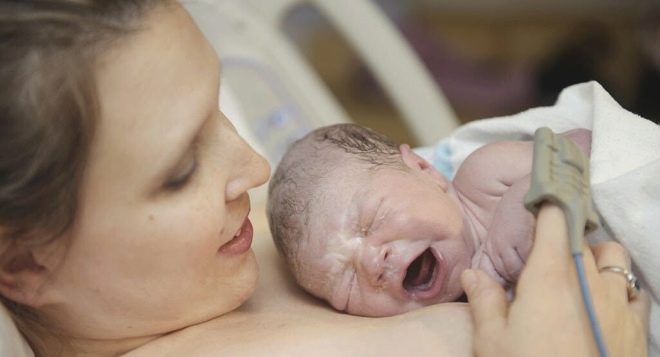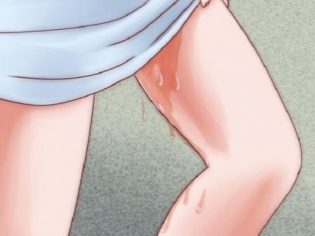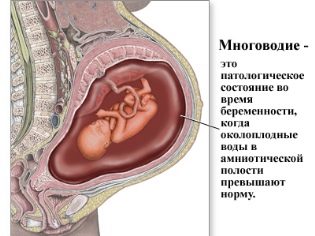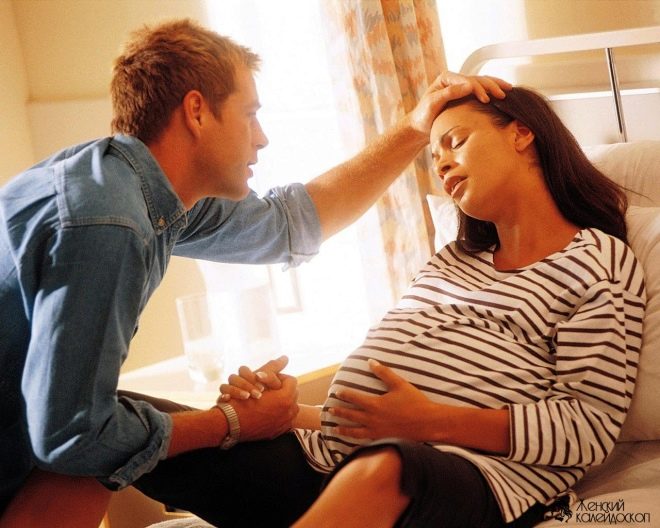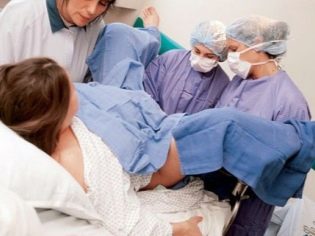Features of rapid delivery
What pregnant woman does not dream of giving birth quickly? But it is only at first glance a quick generic process - good. On closer examination, fast delivery can be very dangerous for both women and their children. Fast - not always good, but in relation to childbirth and even more so. In this article we will talk about what are the rapid birth, what is their danger and how to prevent them.
What it is?
The most favorable are childbirth, in which the baby passes each stage of the birth canal gradually. Once in one or another part of them, he manages to adapt to new conditions, which significantly reduces the risks of getting a pinch of birth trauma, many of which can be very dangerous.
In normal women with primiparous women, childbirth can last both 12 and 14 hours, and for women who give birth again - 8-10 hours. The duration of the birth process up to 18 hours is not considered abnormal and protracted. If for some reason the birth process starts to flow faster than nature intended for the best adaptation of the baby, the doctors talk about fast and rapid birth.
Fast and rapid in the understanding of obstetricians - not the same thing. The International Classification of Diseases (ICD) clearly distinguishes these types of abnormal generic activity into separate ones. Prompt called childbirth, which last a total of up to 4 hours. If a woman gives birth to a firstborn, then the rapid delivery of her lasts no more than 4 hours (for multiparous - 2 hours). If the primiparous patient gives birth in 4-6 hours, then they talk about a fast delivery.
At the physiological level, there are quick and intense bouts. They are dangerous because it increases the risk of injury to the child and the genital tract of the mother. With such intensive contractions, uterine tissues are overexcited, and the pressure inside its cavity increases significantly. In such extreme conditions, the convulsive state of the myometrium sometimes develops, which may well lead to rupture of the reproductive organ.
Despite the fact that the ICD still separates the concepts of “fast” and “swift”, the difference between them is only 1 hour, and therefore quite often even medical professionals use them as synonyms. It should be noted that quick deliveries happen infrequently - they have, according to the existing medical statistics, no more than 0.4-2% of all urgent deliveries.
Such genera are pathological, because they contradict natural mechanisms. Quite often, they are accompanied by ruptures of the vagina, cervix, massive and life-threatening bleeding, divergence of the pelvic bones. Often, the placenta is exfoliated in fast and rapid delivery, which leads to the development of severe bleeding, as well as acute hypoxia in the child, which can cause disability or death. A considerable percentage of complications are birth injuries.
The faster childbirth proceeds, the higher the likelihood of the onset of negative complications.
Why is this happening?
The reasons that can lead to the development of fast and rapid labor activity are numerous. The factors that contribute to this pathological process of the generic process may lie in different areas.
Most often the reason lies in the increased excitability of myometrium - uterine tissue. Its increased reaction to hormones, stimulating contractions, and starts the process of overexcitation.This property of the myometrium may well be inherited by a woman from her own mother or grandmother, and can also be acquired.
Often the reason lies in the increased production of oxytocin, when this hormone, produced by the placenta and pituitary, is synthesized in the body more than is necessary to ensure normal and measured birth contractions.
One-time discharge of a large amount of amniotic fluid increases the likelihood that a woman will give birth rapidly. When pouring out, a huge amount of active substances is released, which strengthen and speed up the process of the birth of a baby.
Not so long ago, in maternity hospitals, it was a pernicious practice to stimulate with medication almost every birth. At the same time, they did not strongly bother with the presence of strict indications for induction of labor, but simply pierced the fetal bladder at the right time and began to inject oxytocin. Today, such induction with no evidence was refused, since inept and unjustified stimulation often became the cause of fast and rapid delivery with all aggravating consequences.
Doctors noted that most often rapid and rapid delivery occurs in women who are unstable psyche, suffer from neurosis, hysteria, prone to depression, sharp drops of emotional background. The following reasons increase the likelihood of such an outcome of pregnancy:
- adrenal ailments;
- thyroid disease in a pregnant woman;
- inflammatory and infectious diseases of the genitourinary system.
It should be noted that doctors have been studying the causes of rapid labor for a long time. Long-term studies of Russian and foreign experts have shown that the risk group includes:
- patients with obstetric history, in particular, previous injuries of the reproductive organs, surgery on the uterus, as well as severe ruptures during previous births;
- women who have given birth to dead babies;
- pregnant women who have already carried out and given birth to three or more children, and now bear the next baby;
- women diagnosed with cervical insufficiency during an ongoing pregnancy;
- ladies with a wide basin;
- patients carrying, according to preliminary estimates of the ultrasound, small in size and weight of the child;
- patients who have already had a rapid birth before;
- girls who become pregnant at the age of 18 and pregnant women who are over 36 years old at the time of the “interesting situation”.
The risk that you have to give birth rapidly, exists in pregnant women with hypertension, heart and vascular diseases, and anemia. Among the probable factors of negative influence are indicated such pathologies as polyhydramnios, large fetuses, twins or triplets of pregnancy, late toxicosis in women, rhesus-conflict between the mother and the fetus. The debate about the degree of influence of certain reasons is still going on. But in general, scientists and physicians of all countries agree on the fact that the main cause of such pathological labors is the disruption of the nervous system. That is, the brain with an error receives afferent impulses coming to it from the uterus receptors.
As a result, the generic activity becomes abnormal. And the reasons that can disrupt the reception of pulses, just lie in the factors listed above. Most often, the true root cause cannot be established.
How do they flow?
Any childbirth consists of three periods, which successively replace each other. In the first period is the disclosure of the cervix. When it expands to a maximum of 10–12 centimeters, the second period begins — the needy one. In the course of attempts the baby is born. In the third period, the placenta comes out.
Under normal urgent (that is, occurring within normal periods) births, the first period is the longest — about two thirds of the total delivery time is spent on labor. The intensity, strength and duration of contractions grows smoothly and gradually.The second period in normal childbirth also proceeds smoothly and ends with the birth of a child. Childbirth ends with the release of the remnants of the fetal membranes and the “children's place. The total duration of the three periods can be 10, and 12, or more hours.
During fast delivery, the flow options may be different. If the birth was spontaneous and caused them, presumably, uterine factors (stretched neck, weak muscles due to multiple births or for other reasons), in the first period the contractions intensify very quickly and recur in an hour and a half more than 3 times for every five minutes of time.
It is noteworthy that spontaneous labor rarely leads to female injuries - along with the cervix, which opens abnormally quickly, the birth canal also has less resistance. Due to this, breaks occur infrequently. But for a child, such birth is quite dangerous, especially if the baby is large.
Another adverse scenario - spastic childbirth. These are fast deliveries, which occur on the background of increased contractions - within half an hour after the onset of labor, a woman can celebrate one contraction once every 2 minutes. The contractions themselves are very painful, prolonged, long, periods of rest are minimal, the woman quickly gets tired, worried, nervous. Very often, blood pressure rises, heartbeat quickens, vomiting and nausea appear. Water usually pours out almost in full and ahead of schedule. Forecasts for women and children are less favorable.
During spastic labor, the placenta is often exfoliated, bleeding develops, the child receives injuries to the head and cervical spine, hemorrhages occur in the brain, which may have irreversible consequences in the future. A child is usually born in just a couple of attempts.
There is another version of developments in the hospital. It is called the rapid birth. These are essentially fast deliveries, which begin and in their first period flow as normal, uncomplicated, but the time balance between the first and second periods changes. That is, the attempts last less than the norm and make up only a few minutes instead of a half to two hours. Most often this happens with a small body mass of the fetus, its severe hypotrophy, for example, against the background of severe severe Rh conflict or chronic hypoxia, as well as in women with a wide pelvis.
The risks of rupture and injury in women are high, but the risk of brain and spinal cord injuries in a child is even higher.
Possible consequences
As it has already become clear, for women, the main risk lies in the probability of injury to the genital tract, perineum, cervix, and uterine body. At the same time, uterine rupture is the most dangerous consequence that directly threatens the life of the mother. If this happens, an operation to remove the reproductive organ is urgently carried out.
In the early postpartum period, women who give birth quickly and rapidly, often have problems with the production of breast milk, with the establishment of lactation. More often than other women in childbirth, such mothers have obstructed milk routes and mastitis.
But no matter how dangerous it is for a woman, the consequences for a child can be much more severe.
Abnormal contractions do not leave a chance for normal placental blood flow, and therefore hypoxia develops during the contractions in the child. In severe cases, the brain suffers from oxygen starvation, and during rapid birth through the birth canal, suffocation can occur due to a critical lack of oxygen.
Very often, babies born swiftly or quickly have hematomas of the brain and hemorrhages in various internal organs of various sizes and locations. The rapid and uncompensated passage through the birth canal often leads to fractures of the clavicle, humerus, and spine in the cervical region. Damage to the brain and the entire central nervous system can be total, that is, they cannot be reversed, and they can be treated poorly, if at all.
What are the doctors doing?
Unfortunately, it is very difficult to reach the maternity hospital on time at the start of fast delivery, so most women arrive late, which increases the risk of complications and worsens the overall prognosis for the mother and fetus. Therefore, it is accepted for women from the risk group if they suspect a possible onset of fast delivery to hospitalize in advance. If childbirth begins, it will be better when they proceed initially under the supervision of doctors.
Upon admission to the hospital, doctors are trying to normalize the nature of the generic process. A cleansing enema is contraindicated in this case, and walking around the ward is also. A woman moves only by the medical staff on a special gurney and lies on her side, which is opposite to the position of the child in the womb.
Tocolytic drugs help reduce the intensity of contractions, which are administered intravenously to a woman lying on a bed. If a woman is hypertensive, then calcium antagonists are administered instead of contraindicated tocolytics. If the pains during labor are very severe, epidural anesthesia can be applied.
It gives birth to a woman in a position on her side. Only the afterbirth period takes place in the usual posture - supine with divorced hips.
If the intensity of contractions does not decrease, despite the measures shown, this threatens to rupture the uterus or placental abruption begins, and an emergency caesarean section is performed. The operation is carried out in the case of acute hypoxia in the baby.
At any stage of rapid delivery, there may be a need for blood transfusion, and therefore it is prepared from the moment a woman enters the hospital. Also, a resuscitation team is being prepared in advance, since most children need emergency resuscitation care after a rush to the world.
Prevention
The most effective prevention of rapid delivery is the doctor’s awareness of the health status of the pregnant woman and the woman’s awareness of the possible consequences. Therefore, it is important not to hide anything from the doctor, to attend scheduled appointments in consultations in a timely manner, to observe and follow all the recommendations of the doctor, especially if the woman is in the so-called high-risk group.
During pregnancy, it is better for pregnant women of this group not to plan travels and trips away from home, because rapid births are often called “street” because they can start without prerequisites, all at once.
For a fast-moving birth, see the next video.



